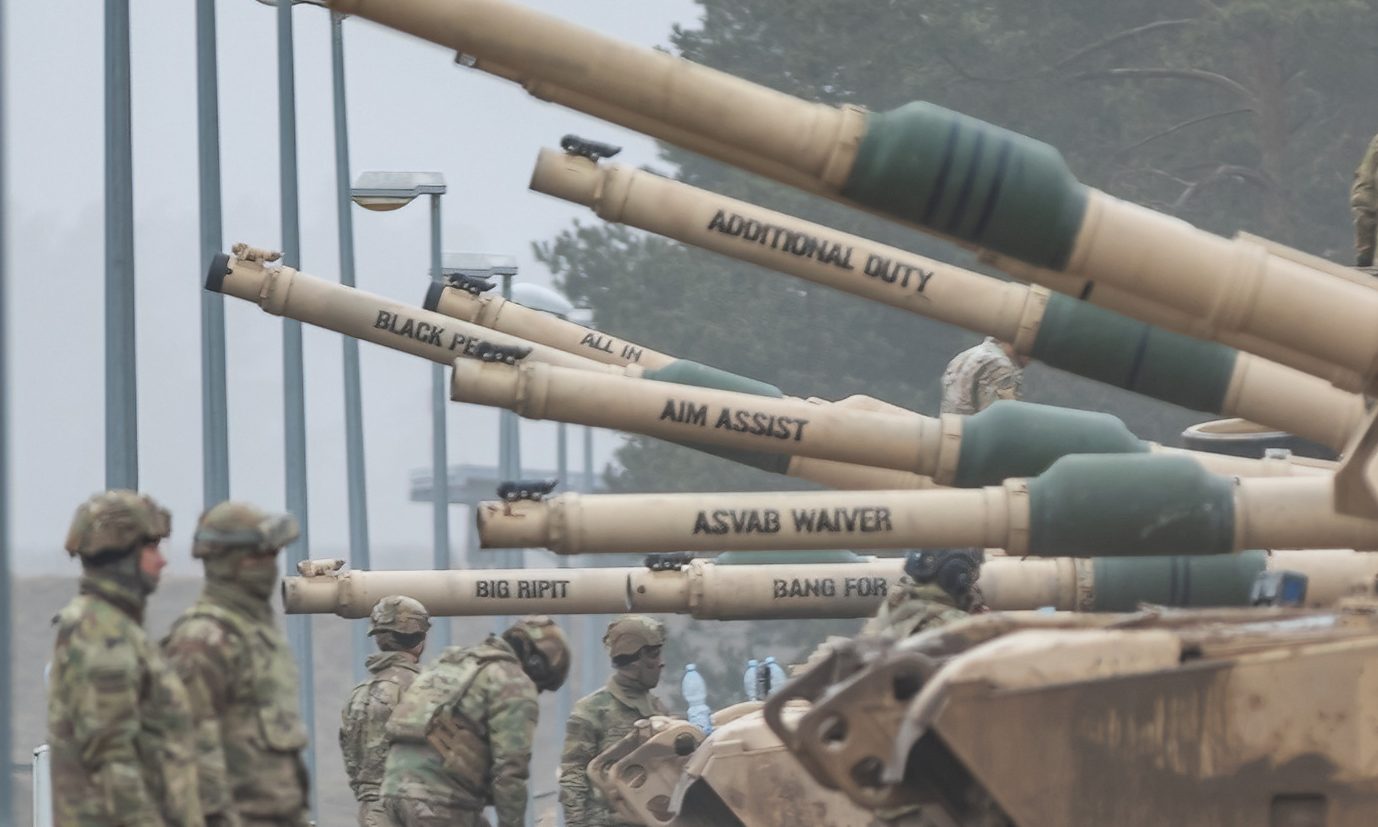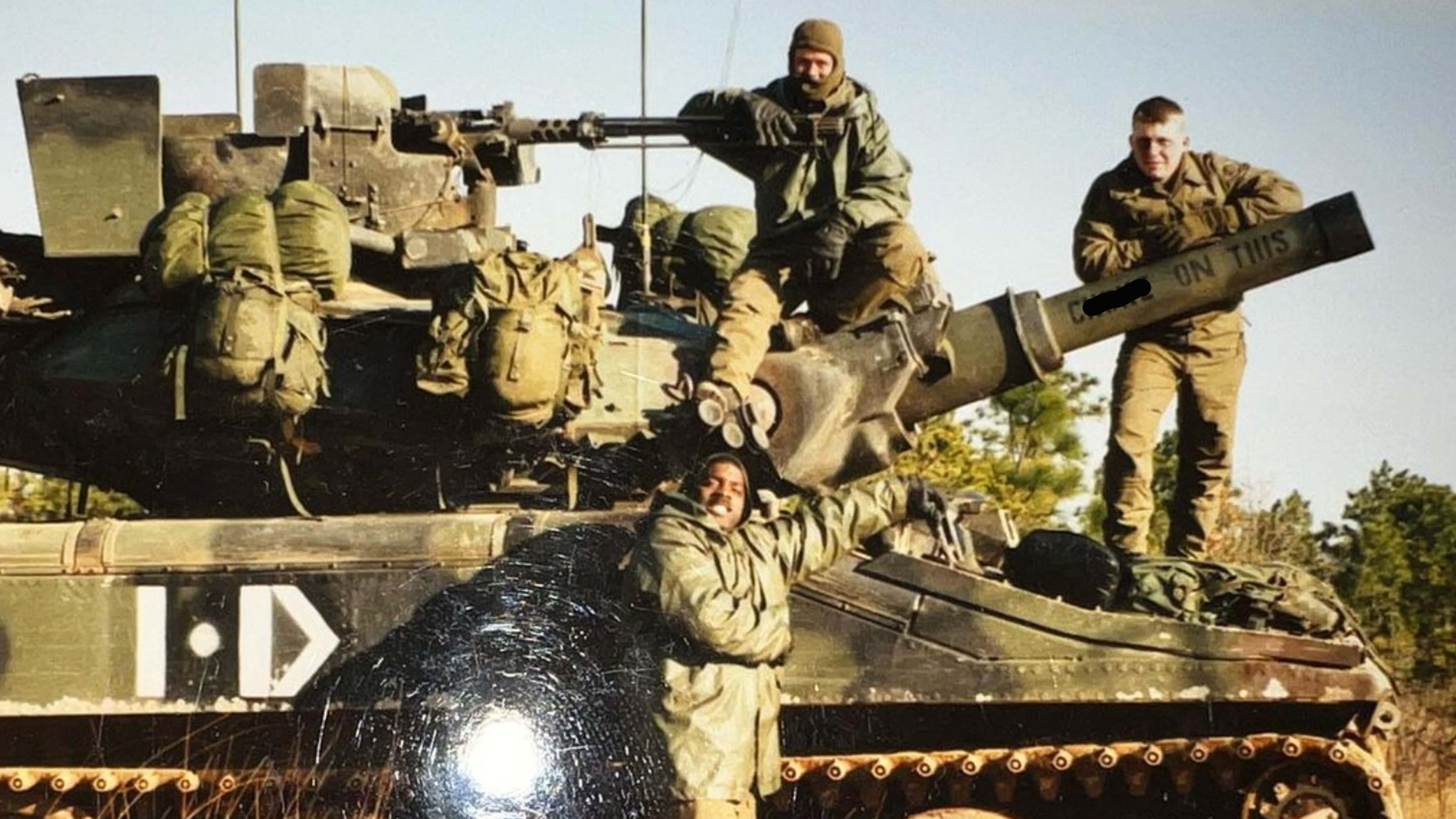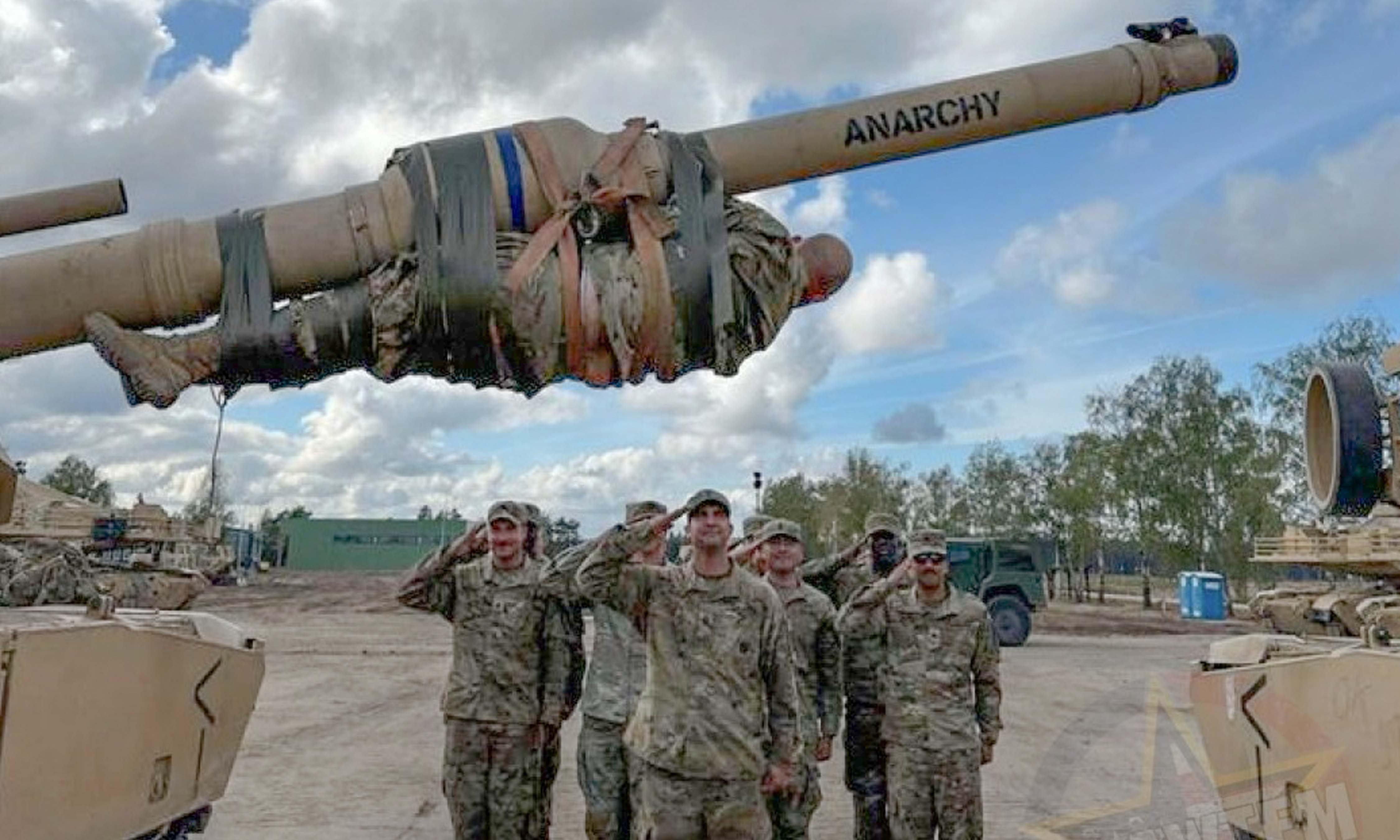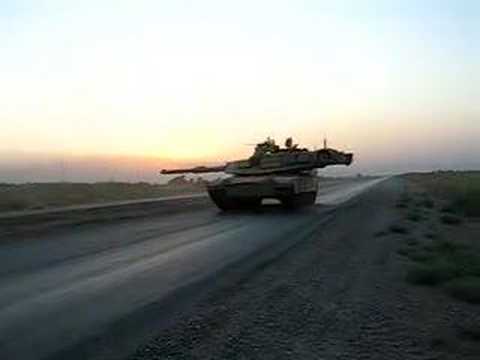How Army tank crews earn the right to name their tanks
Tanker culture dates back to World War II, an integral part of which is crews naming their tanks.Joshua Skovlund
Posted on Oct 25, 2024 3:09 PM EDT

Tanks assigned to the 4th Infantry Division. Army National Guard photo by Sgt. John Schoebel.
For tankers, naming their tank — and stenciling it on the barrel — is a rite of passage, earned by hundreds of hours of training and teamwork. Though traditions vary, in most cases tanker crews have to earn the right to name their tank, a sign that the crew inside has passed every test thrown their way and is ready for combat.
“That’s our home. We live eat, sleep, and work on that vehicle,” said Wes Satoe, a former loader and gunner on an M1 Abrams tank crew. Earning the right to name their tank, Satoe said, “builds crew cohesion, is a morale booster, and a way for the crew to show their pride in their job to other crews.”
A tank’s name also carries its reputation. An Army officer with 20 years in the armor community said that seeing a familiar name on another tank reminds you that you’re going into battle with a trusted friend.
“If you’re an infantryman or another tank unit and you see the specific tank in a gun battle, you knew who was fighting right next to you,” he said.

Photo courtesy of Dwayne Uhlig.
Retired Command Sgt. Maj. Dwayne Uhlig spent much of his 30 years in uniform in mechanized or armor units (“mechanized” units employ lighter, faster vehicles like Bradley Fighting Vehicles to move quickly, while “armor” units are mostly battle-leading tanks). He helped develop training plans for tank crews at the Army’s National Training Center at Fort Irwin, California.
“If a new, untrained crew goes into the gunnery training cycle with a bare or ‘sterile’ tube, we had ceremonies once they qualified, regardless of their score,” Uhlig said. “I loved seeing the crews stenciling a name on their tank. Guys and gals brought stencils, stenciled their tank barrels, and drove back to their motor pools with a sense of pride.”
But crews can’t just name their tank whatever they want. There’s a process — some of it official, some of it traditional — that goes into naming a tank before a name is painted on the main gun barrel.
How naming a tank works
Uhlig, along with many other tankers who spoke with Task & Purpose, said naming tanks varies in practice from unit to unit and commander to commander. But there are some common approaches to earning that rite of passage.For Uhlig’s unit, tank crews submitted their proposed tank names, which the command team vetted to make sure the “good idea fairy” didn’t prevail with a vulgar suggestion that would bring heat onto the formation.
A common theme is that tank names start with the first letter of the company the tank crew is assigned to. A crew from A company might have tanks like ‘ASVAB waiver’ and ‘Anarchy’ while D company crews might go with ‘Democracy Deliverer’ or ‘Dropped As A Baby.’

Army photo by Maj. Carson Petry.
Some commands allow approval at the company level, while others require brigade-level approval. Approvals can range from the tank commander giving the go-ahead to stencil the tank name onto their main gun barrel to a change of command ceremony where crews paint new names on their tanks. Uhlig and several other tankers said it is common that once a crew is qualified following gunnery qualification, they get the go-ahead to stencil their new name onto their tank’s main gun barrel.
Gunnery qualification is when a tank crew is tested on integrated weapons strategy on six general tests known as “gunnery tables.”
- Table I: Gunnery skills test.
- Table II: Simulations.
- Table III: Proficiency to train with live rounds.
- Table IV: Basic skills of the platform.
- Table V: Practice.
- Table VI: Qualification for crew to participate in live-fire exercises.
“It’s bad luck to go into a gunnery without naming your tank first, like being on a boat and the champagne bottle doesn’t crack,” Satoe said. “Gunnery is to the tankers what the infantry’s [Expert Infantryman Badge] or the medic’s Expert Medical badge is.”

Ultimately, it’s a common prerequisite for crews to qualify for full-duty status before getting their tank name stenciled on. Crews can score up to 1,000 points and must beat 700 to be qualified. Anything over 900 is “distinguished.”
In 2023, the III Armored Corps changed the rules on naming tanks, stating that only “distinguished” tank crews are allowed to paint names on their tanks. Uhlig strongly disagrees with that policy change, saying any crew that qualifies should be able to name their tanks.
“So let’s look at Ranger School. You got one guy who goes through Ranger School and aces it the entire time. Then you got another guy that gets recycled twice, three, four times. His tab looks no different than the guy who went through it once and made it all the way through. He still gets the same diploma,” Uhlig said. “Why are we taking away from a crew that has busted their ass just as hard?”
Tank names across the Army
Tank names are a window into tanker culture and humor. Like many traditions in the military, naming a tank isn’t rooted in official regulation governed by the top brass — though the III Armored Corps’ restriction is close to it. Generally, it’s a word-of-mouth tradition with a lineage that goes back to how cavalry troops named their horses in the 1800s.Uhlig said crews put names on tanks during World War I, which saw the first use of tanks. That tradition became widespread in World War II and has continued with soldiers naming their tanks and other armor like Bradley Fighting Vehicles.
Task & Purpose has extensively covered the many tank names that surfaced via the military’s Defense Visual Information Distribution Service in recent years. Some of our team favorites are “death trap,” “anarchy,” “ASVAB waiver,” and “dropped as a baby.”

Uhlig’s favorite tank name was “choke on this,” which he had stenciled on his M551 Sheridan in 1993. That name, he admitted, came from an era when crews could take a little more liberty with how they named their tanks.
Not that crews haven’t kept trying.
“We gave them some prerequisites like you’re not going to list porn star names, dirty movies, anything that would be politically upsetting to others, and no race-baiting kind of names,” Uhlig said. “It wouldn’t be anything like that, but I was also very blessed back in the day when I had NCOs that wouldn’t do that regardless.”
https://taskandpurpose.com/culture/how-soldiers-name-tanks/






